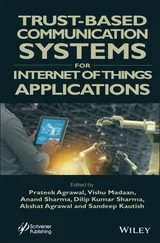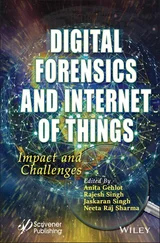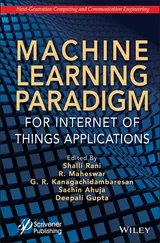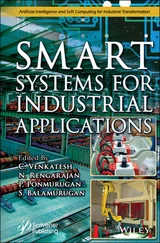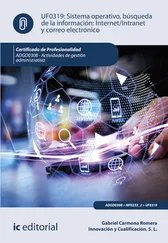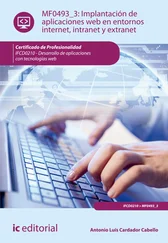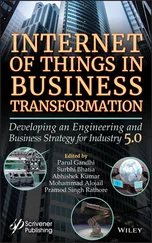Industrial Internet of Things (IIoT)
Здесь есть возможность читать онлайн «Industrial Internet of Things (IIoT)» — ознакомительный отрывок электронной книги совершенно бесплатно, а после прочтения отрывка купить полную версию. В некоторых случаях можно слушать аудио, скачать через торрент в формате fb2 и присутствует краткое содержание. Жанр: unrecognised, на английском языке. Описание произведения, (предисловие) а так же отзывы посетителей доступны на портале библиотеки ЛибКат.
- Название:Industrial Internet of Things (IIoT)
- Автор:
- Жанр:
- Год:неизвестен
- ISBN:нет данных
- Рейтинг книги:5 / 5. Голосов: 1
-
Избранное:Добавить в избранное
- Отзывы:
-
Ваша оценка:
- 100
- 1
- 2
- 3
- 4
- 5
Industrial Internet of Things (IIoT): краткое содержание, описание и аннотация
Предлагаем к чтению аннотацию, описание, краткое содержание или предисловие (зависит от того, что написал сам автор книги «Industrial Internet of Things (IIoT)»). Если вы не нашли необходимую информацию о книге — напишите в комментариях, мы постараемся отыскать её.
This book discusses how the industrial internet will be augmented through increased network agility, integrated artificial intelligence (AI) and the capacity to deploy, automate, orchestrate, and secure diverse user cases at hyperscale.
Audience
Industrial Internet of Things (IIoT) — читать онлайн ознакомительный отрывок
Ниже представлен текст книги, разбитый по страницам. Система сохранения места последней прочитанной страницы, позволяет с удобством читать онлайн бесплатно книгу «Industrial Internet of Things (IIoT)», без необходимости каждый раз заново искать на чём Вы остановились. Поставьте закладку, и сможете в любой момент перейти на страницу, на которой закончили чтение.
Интервал:
Закладка:
Pondering on AI, this uses algorithms to analyze data and resources through aspects such as Machine Learning by automating processes without manual intervention, incorporating with IoT gaining connectivity and capacity for data exchange. The great advantage of the IoT concept is in the various solutions involving machine-to-machine communication, integrated into a single network, where it publish and consume information. Thus, it is through the integration of IoT, with the analysis of broad data sets (Big Data Analytics), and with the performance in ecosystems using AIoT that it is possible to exceed the limits that each of these technologies has individually, developing an advanced solution to support operational management, offering predictive maintenance, and consequently increasing control, quality, and efficiency in business operations [35].
1.3.1 Industry 4.0 Concept
Industry 4.0 is considered as Fourth Industrial, also characterized by the introduction of information technology in the industry, representing the total transformation of the entire ambit of industrial production through the unity of digital technology and the internet (connection) with conventional industry, deriving from IoT as a connected network, which alone has immense amounts of connections between industrial cells [1].
IoT in Industry 4.0 is basically responsible for the integration of all devices inside and outside the industrial plant, relating the digital transformation and the function of the IIoT, together with developments in mechanics, engineering, and manufacturing [2].
Consider that the IoT is a network of physical objects, platforms, systems, and applications with incorporated technology to communicate, feel, or interact digitally with internal and external environments. The IoT on the shop floor is related to an environment where all equipment and machines are connected in networks and providing information in a unique way; therefore, different industrial cells have different purposes, having different functions and applicabilities, but they are united under the same network. Thus, IIoT is a subcategory of IoT, which also comprises user-oriented applications, such as usable devices, machine devices, and infrastructure with integrated sensors that transmit data (collected information) via the internet and which are managed by software, technology for smart homes, and even cars autonomous [3].
However, this industrial revolution is not yet a reality, even so, it is being motivated by three major changes in the productive industrial world related to the exponential advance of the capacity of computers, the immense amount of digitized information, and also new innovation strategies in relation to research and technology [4].
The connections generated by IoT in the industry generate opportunities create a large circle of added value to products and services as integrated monitoring, generating data that communicate in real time through what can be considered a large unified database or even scheduled maintenance stop on the production line before this is intensified. From this generated database, automatic decisions are made through online communication between interconnected devices correlated to event monitoring. Based on the decisions taken through the global view, the production process becomes more efficient, reducing negative impacts and maximizing the value chain of a given industrial sector [5].
The benefits of IoT in Industry 4.0 for industrial plants can be understood in the following aspects related to operational efficiency and maximizing profits by introducing more flexible automation, connectivity, and production techniques. In addition, scalability, time, and cost savings help to maximize profits for industrial organizations. Pondering about the aspects that increase the operational efficiency of a plant is reducing production stops, reducing the cost of the asset cycle, improving the use of the asset, and even improving the production [46].
Even listing the benefits of new services and business models given that IoT in Industry 4.0 allows the creation of new sources of revenue by creating new connected services. Hybrid business models allow both digital products and services to be used. In an applicable context, a vehicle manufacturer can take advantage of the raw data obtained to provide car condition service in real time as a source for preventive maintenance. This use of digital services also improves the relationship with the customer, since it allows different points of contact that generate valuable information for the customer, creating a relationship of trust and loyalty [47].
Even the benefits related to greater knowledge for decision-making arising from the analysis of industrial data, allowing and facilitating the making of better decisions due to a more accurate view of the industry’s performance. To top it off, IIoT’s network of smart devices allows industrial organizations to connect all of their employees, data, and processes from the shop floor to executives and managers, further assisting the productivity of department leaders and decision-making [48].
It is important to emphasize that more than facilitating decision making, Industry 4.0 aims to promote that these decisions are made automatically by intelligent techniques, toward an autonomous reaction of the machines. From the point of view of systems and equipment, these steps correspond, respectively, to a vision of what is happening (data), to know why it is happening (analysis, knowledge), and to predict what will happen (based on standards and AI). After that, analyze the implementation of a strategic plan, requiring a clear roadmap in relation to the processes, security, and necessary technologies [7].
1.3.2 Industrial Internet of Things
The world is experiencing a digital transformation and the IIoT aims to connect different devices to collect and transmit data in an industrial environment. Performing this communication through essential variables related to the devices, the communication between the devices, the data, and the data analysis. The concept is the same as the IoT used for home appliances; however, for IIoT, the connection is between industrial machines, legacy systems, and other devices related to the world of production. This can be applied in sectors such as facility management, supply chain monitoring, healthcare, and retail, among others [8].
The application of IIoT is through a network of devices and intelligent objects that collect, through sensors, and share large amounts of data. This forms a technological layer that can directly connect a product supplier in real time on the production line, which analyzes the quality and use of your product. This through intelligent data consumption creating a critical profile can connect the logistic chain of input and output of materials and control production, in real time, at the optimum point of operation [9].
The main challenges of IIoT are interoperability, security, and a high volume of data exchange. Interoperability is the ability of different systems and organizations to work together, considering the difficulty on the appearance of devices from different brands is a challenge and it is necessary to develop technological initiatives to unify these systems. Security is a challenge because companies need to know that their data is safe, and it is necessary to guarantee the necessary infrastructure for an exponential explosion of data [10].
Thus, IIoT comprises of machines connected to the internet and advanced analytics platforms (digital structure) that process the data produced, and IIoT devices range from complex industrial robots to tiny environmental sensors; however, the technology also includes agriculture, financial services, healthcare, retail, and advertising, among others. To get the most out of the benefits of IIoT, three technological capabilities related to sensor-oriented computing, industrial analytics, and the application of intelligent machines are needed [49].
Читать дальшеИнтервал:
Закладка:
Похожие книги на «Industrial Internet of Things (IIoT)»
Представляем Вашему вниманию похожие книги на «Industrial Internet of Things (IIoT)» списком для выбора. Мы отобрали схожую по названию и смыслу литературу в надежде предоставить читателям больше вариантов отыскать новые, интересные, ещё непрочитанные произведения.
Обсуждение, отзывы о книге «Industrial Internet of Things (IIoT)» и просто собственные мнения читателей. Оставьте ваши комментарии, напишите, что Вы думаете о произведении, его смысле или главных героях. Укажите что конкретно понравилось, а что нет, и почему Вы так считаете.

